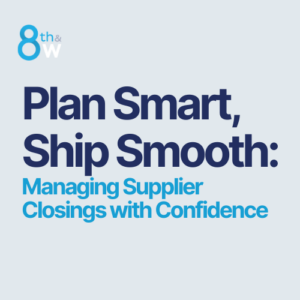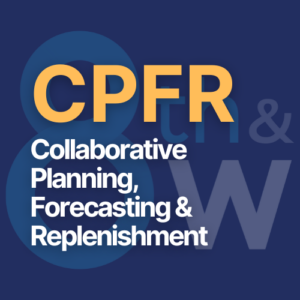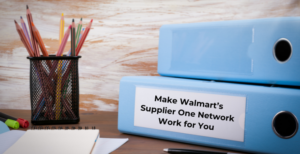On-shelf availability may be the hottest subject in retail at the moment. Phantom inventory, missing-in-action merchandise, and empty shelves affect all of us — retailers, suppliers, and certainly customers.
The best retailers know what products their customers want and they have those items ready and handy when their customers want to buy. The end goal is always the customer’s satisfaction.
But when a customer looks for and can’t find a product, she’s disappointed, frustrated, and sometimes even upset. Anything but satisfied.
Keep reading to learn what on-shelf availability means, how it differs from in-stock, issues with accuracy, and ways to improve it.
What Is OSA?
On-Shelf Availability (OSA) means that an item is located on its designated shelf in a store and available for a customer to purchase. Suppliers track their items’ OSA via retail software systems or third-party service providers physically monitoring stores to verify product is on the shelf.
OSA vs. In-Stock
On-shelf availability and in-stock are not interchangeable terms. They are actually two separate steps in the supply chain.
When merchandise is classified as in-stock, that simply means it is somewhere in the store and should be available for purchase. However, an in-stock item can be on the shelf, in the backroom, on a top-shelf or display inventory overflow storage area, or on the salesfloor sitting on the wrong shelf.
On-shelf availability means the item is in the store and available for purchase at its assigned space.
Issues With OSA Accuracy
As explained above, the difference between OSA levels and in-stock levels is one of the toughest data points in the supply chain. Many times, a retailer’s inventory software will show that an item is in-stock. The retailer and supplier may assume that because the item is in-stock, it’s available for purchase on the salesfloor. However, there are several reasons the data can be misleading:
- Received only – The item may have been checked in at the store level, but it’s still sitting in the backroom or other inventory overflow area.
- Mis-shelving – The item may be on the salesfloor, but it was placed on the wrong shelf. It could have also been moved by a customer to another area of the store.
- Warehouse received only – The item may be showing in the system as received, but only at a warehouse or distribution center. It has not been transported to the store for sale.
- Not visible – The item may be on the shelf ready for purchase, but it may be blocked by other items, signs, or store displays.
- Non-saleable items – The system may be counting non-saleable items as available for sale. This would include items that are stolen, damaged or for other reasons items would not be qualified to sell.
Why Focus On OSA Issues?
Retailers and suppliers have to work together on OSA issues. Whether it is inaccuracy in reporting or missing items, all OSA issues lead to the same end result: lost sales. Any time sales are lost due to OSA issues, it results in a negative impact on the retailer, supplier, and customer.
OSA for the Retailer
When a customer enters a store an the item they want is not on the shelf, the retailer loses more than a sale; they potentially lose customer loyalty. Today’s shoppers are less loyal to retailers (Walmart, Target, Best Buy, etc.). If a customer is loyal to a brand, it’s usually the product brand (Coca-Cola, Nike, Apple, etc.). Customers know if they want a product, they can have exactly what they want, even if it means going to another retailer or searching online.
Aside from losing sales and customer loyalty, incorrect tracking of OSA causes supply chain issues for retailers. The bad data on what is or is not in the store creates inaccurate forecasting and replenishment issues.
OSA for the Supplier
What happens when a customer walks into a store and sees their favorite brand of peanut butter is not on the shelf? It’s more than a lost sale; it’s encouraging that customer to try a new brand.
That one empty space on the shelf is surrounded by competing national brand peanut butter and possibly the retailer’s private label. The customer’s loyalty to the product brand is now being pushed to the competition.
On the supply chain side, poor OSA can cause the retailer to believe there is no demand for the supplier’s product. This can lead to a cut in assigned shelf space or removal from the modular. The inaccurate data from poor tracking of OSA can also create bad decisions about future production from the supplier.
OSA for the Customer
As mentioned above, the biggest drawback of poor OSA for customers is not being able to get the item they want when they want it at the place they depended on to have it. This frustration can carry over to having negative perceptions of the supplier brand and the retailer itself. Retailers and suppliers need to remember OSA issues cause more than losing a sale; OSA issues cause losing a sale to someone else!
Ways to Improve OSA
Once a supplier has discovered issues with their OSA and the reasons why, it’s time to plan for a solution. Depending on where the OSA issue is happening in the supply chain, the resolution may take time to show itself working. Here are some proven solutions suppliers use to improve OSA over time:
Inspect Packaging and Shipping
One of the most common reasons freight does not make it to the store shelf is it gets damaged in transit. The shipment may be marked as received at the store level, but the actual product never gets displayed because it is not suitable for sale.
Review product packaging and shipping procedures to improve this part of the supply chain. This can have a huge impact on OSA long before the product gets to the store.
Invest in Third-Party Verification
What’s the best way to know if items are truly on the shelf? Look for yourself and see! Many suppliers employ third-party agencies to inspect their shelf placement and displays nationwide. Representatives simply find the items in a store, take photos for the supplier, and research any issues while in the area.
Stock Your Own Product
Smaller suppliers may not have this luxury, but bigger players avoid OSA issues by stocking their own product. Beverage, bread, and snack suppliers will deliver their products directly to a store and place them on the shelf or display.
In some cases, suppliers will have floor or shelf displays shipped to a store with instructions to “hold for representative.” The supplier will send someone to the store to find the display in the backroom and assemble it themselves. This guarantees the display is up and stocked without having to rely on resources from the retailer.
Invest in Technology
Retailers are always looking for ways to improve supply chain and that last hurdle of getting product to the shelf is no exception. Radio frequency identification (RFID) tagging and labeling are becoming more popular and required by retailers. With an RFID tag, suppliers can no only see if an item is in a store, but they can see exactly where it is in the store.
RFID tags and labels also help with inventory counts. A big advantage of RFID is for the customer. If they want to purchase a product in a store, the RFID keeps an accurate count of items in the store so the customer can verify it’s there online before making the trip.
OSA for Walmart Suppliers
When most suppliers think of improving supply chain performance for Walmart, two areas come to mind: On Time In Full (OTIF) and the Supplier Quality Excellence Program (SQEP). Suppliers are laser-focused on these two initiatives to prevent fines and penalties for non-compliance. However, with so much attention on OTIF and SQEP, the last piece of the supply chain sometimes gets overlooked.
OTIF and SQEP are strictly focused on getting merchandise from the supplier’s warehouse to the Walmart store or distribution center. The last part of the merchandise journey is getting from the Walmart store’s backroom to the shelf for the customer.
While errors in this part of the supply chain do not carry any fines, they can result in lost sales. In addition to improving on OTIF and SQEP, Walmart suppliers need to complete the process with a renewed focus on OSA.
Conclusion
Customers can not buy the product unless it’s on the shelf. This last piece of the supply chain is critical to sales growth, customer loyalty, accurate forecasting, and consistent replenishment.
As a Walmart supplier, OSA can mean the difference between more business with Walmart or losing modular space. The team at 8th & Walton can answer your supply chain questions to help improve your OSA performance. Request a free 15-minute consultation this week.



